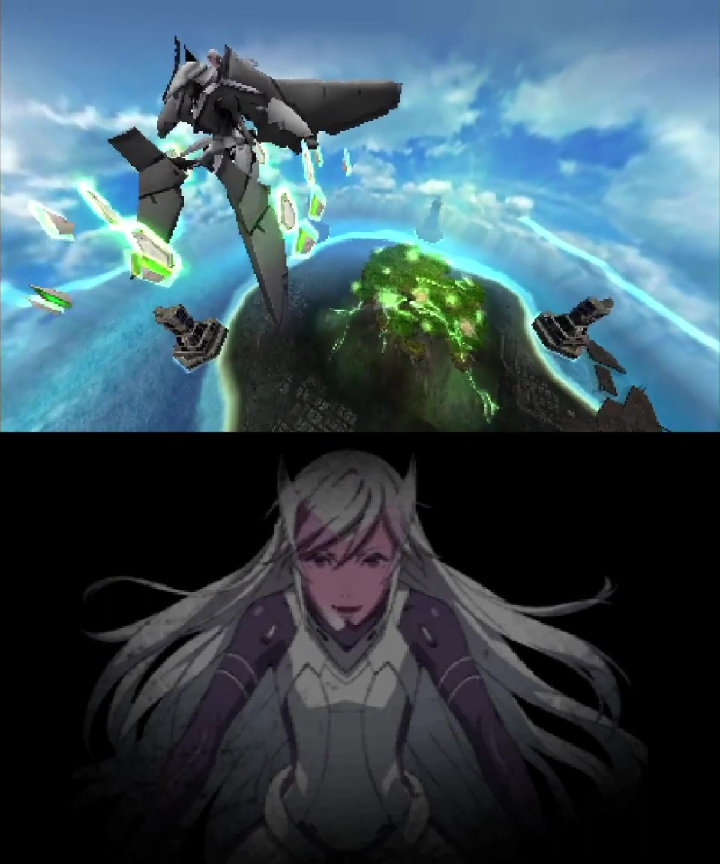
Finishing levels allows for the rapid advance of Japanese forces and receives uncomplicated acclaim and adoration from Kira and the other characters. Kamui is unstoppable, at least if the player is skilled. In the end of Liberation Maiden, Shoko rides the Kamui over restored open fields of Honshu that prove a shocking contrast to the industrial hell of both the Dominion’s facilities and the Tokyo of The 25th Ward. She reflects to Kira how “beautiful” and “pretty” Japan is, but the cycle of violence continues as the Dominion launches a counterattack. Much like the ideal Kamui/Ayame represents, this freedom will be pursued but never achieved. (The sequel might contradict this reading, but information about SIN is not readily available in English.)
Using Kamui’s power, then, Liberation Maiden has the player cleanse the land and free spirits oppressed by modern society in a much more clearly environmental and liberatory way than Worso. Years after the darkness that pervaded the writing of The 25th Ward, now in a shoot-’em-up, Kamui once embodies liberatory violence. The Kamui is even referred to as simply “the Liberator.” He has become the avatar that frees Japan from sci-fi imperialists. The optimism (and the nationalism not present in the Kill the Past titles) may reflect that neither Suda nor Ooka wrote the script.
But Liberation Maiden remains an essentially goofy and solipsistic video game power fantasy. Whereas The Silver Case has more than suspicion of the police force and how the government wields Kamui, in Liberation Maiden, Kamui is not only aligned with an uncomplicatedly good government but is the faithful personal tool of a heroic head of state. In this way, the liberation becomes suspect. The Silver Case may bungle the liberatory potential of Kamui because the writers refuse to ever let characters fully part ways from the corrupt police force. While less troubling because of its breezier narrative, Liberation Maiden exacerbates this point.
Before, government agents sanctioned to use violence (Kusabi, Akira) realize authority is corrupt and turn their violence around. Now, only a government agent sanctioned to use violence who does so with complete loyalty to authority can free the people. Without a Tokio or Hikaru to suggest they even exist, the people prove powerless, passive abstractions in the power fantasy of Shoko’s war against the Dominion. The more optimistic narrative proves more reactionary, the sanitization of Kamui demonstrating a loss of literary sophistication. This is probably inevitable because Liberation Maiden is a goofy shoot-’em-up.
However, this may be misleading. Liberation Maiden is only a prologue to the more involved narrative of SIN. Because SIN is not available in English, I do not know how or if it complicates the Kamui narrative. Unfortunately, this portion of the essay can only remain incomplete.